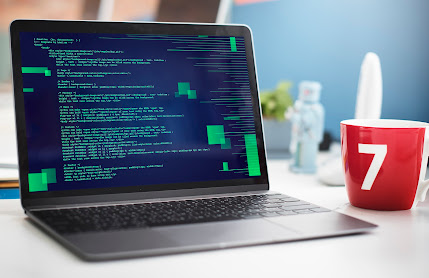Latest
Your Resource for Software Project Documentation
Documentation skills are typically necessary for software developers. How can you make effective use of this documentation, and what is it? This brief instruction will assist you in setting up the foundation.
Let's examine the importance of documentation, particularly as it relates to Architectural Decision Records (ADRs).
Let's examine the importance of documentation, particularly as it relates to Architectural Decision Records (ADRs).
1. An appropriate memory track
Have you ever attempted to recall the rationale behind a particular architectural decision you made six months ago? We typically have trouble remembering such specifics. We can record such crucial choices so we don't have to rely just on our recollections. For our projects, it's similar to maintaining a journal.
2. Improved collaboration
Let's say your group has experimented with various approaches to an issue. Everyone can learn if you document what worked and what didn't. This is particularly beneficial for later-arriving new team members.
Additionally, this may become a wonderful mentorship opportunity. In addition to helping junior or beginner-level team members catch up for greater understanding, it can help new team members swiftly catch up.
3. Simple communication
Consider working on a project that is currently in progress. You examine the decisions, code structure, and other elements. The choices and logic that the earlier teams used to produce the code you have today, however, are incomprehensible to you.
Documentation is useful in this situation. Complete, current information will be sent to you or any new development team.
An Architectural Decision Record (ADR): What is it?
Consider an ADR to be the architectural record book for your project. This is where you record: The choice you made.
What prompted you to make that decision?
The results and lessons learned from what transpired afterward.
It chronicles the development, progress, and evolution of your project and functions similarly to a team journal.
Any project's success depends on producing quality software project documentation. Clear communication, easier teamwork, and project maintenance are all made possible by documentation. Here is a summary of the key categories of documentation and advice on how to produce it:
Software Project Documentation Types
1. An overview of the project (high-level documentation)
Goal: Provides an overview of the project's goals, scope, and stakeholders.
Important Sections:
Goal: Outlines the intended function of the software.
Types:
Functional Requirements: Specify particular attributes and capabilities.
1. An overview of the project (high-level documentation)
Goal: Provides an overview of the project's goals, scope, and stakeholders.
Important Sections:
- Project aims and objectives
- Limitations and scope
- Roles and stakeholders
- Overview of the high-level architecture
Goal: Outlines the intended function of the software.
Types:
Functional Requirements: Specify particular attributes and capabilities.
Define performance, scalability, security, and other non-functional
requirements.
Tools: Google Docs, Jama Connect, or Confluence, among others.
3. Technical Records
The goal is to give developers and system architects technical information.
Important Sections:
- Diagrams of the system architecture
- documentation for APIs
- Schema designs and data models
- Configurations for deployment and environments
- The goal is to assist end users in comprehending and using the product.
- Types include user guides.
- Quick-start instructions and tutorials
- FAQs and advice for troubleshooting
5. Documentation of the Process
Goal: Monitors project procedures to ensure team responsibility and alignment.
For instance:
Goal: Monitors project procedures to ensure team responsibility and alignment.
For instance:
- Agile processes (such as retrospectives and sprint planning)
- Procedures for change management
- Checklists for code reviews
- The goal is to ensure quality by documenting testing methods and results.
- Types
- include test cases and test plans.
- Test scripts that run automatically
- Reports and test results
- Goal: Directs updates and maintenance after launch.
- Contains:
- Logs of bug tracking
- Recognized problems
- History of updates and versions
Some Advice for Efficient Documentation
1. Make Use of Clear and Consistent Wording
1. Make Use of Clear and Consistent Wording
- If at all possible, define technical terms and stay away from jargon.
- To ensure uniformity among documents, use templates.
2. Utilize Images
- For clarification, provide flowcharts, diagrams, and mockups.
- Tools: Figma, Draw.io, and Lucidchart.
- Version control systems: Bitbucket, GitHub/GitLab, and Git
- Editing collaboratively using Google Docs, Confluence, and Notion
- Diagramming: Miro, PlantUML
4. Make it cooperative.
- To guarantee correctness, promote team reviews and contributions.
- As the project progresses, update the documentation frequently.
- Versioning can be used to monitor changes.
- For convenient access, keep documentation in a shared repository (such as Confluence, Notion, or SharePoint).




Comments
Post a Comment